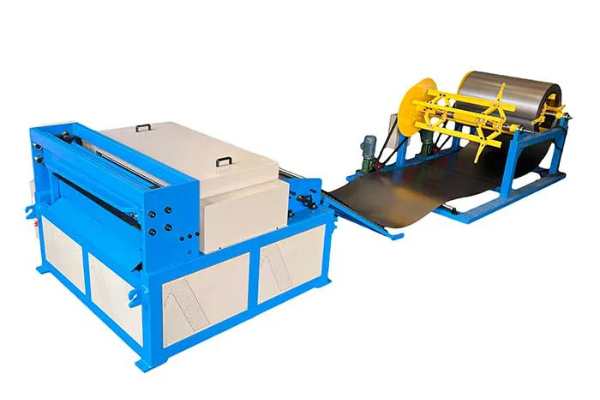
From DIY to Heavy Duty- Plate Benders for Every Fabrication Need
- By:Metmac
- 2024-06-04
- 88
In the world of metal fabrication, plate bending is a crucial process for shaping and forming metal sheets into desired configurations. From intricate decorative pieces to heavy-duty industrial components, plate benders come in various sizes, capacities, and features to meet the diverse needs of fabricators. This article delves into the world of plate benders, exploring their types, capabilities, and applications.
Types of Plate Benders
Hydraulic Plate Benders
Hydraulic plate benders utilize hydraulic pressure to apply force for bending. They offer excellent precision and control, making them suitable for bending complex shapes and intricate designs. These machines come in various sizes, from benchtop models for hobbyists to large-scale units used in industrial settings.
Mechanical Plate Benders
Mechanical plate benders rely on mechanical leverage to bend metal sheets. They are generally more affordable and easier to operate than hydraulic models. However, they may not provide the same level of precision and are more limited in bending capacity.
CNC Plate Benders
CNC plate benders incorporate computer numerical control (CNC) technology to automate the bending process. These machines offer high accuracy, repeatability, and the ability to handle complex bends with ease. They are preferred for high-volume production and precise fabrication tasks.
Capabilities and Features
Bending Capacity
The bending capacity of a plate bender refers to its maximum bending thickness and width. It varies widely depending on the size and power of the machine. For DIY enthusiasts, a benchtop plate bender with a capacity of around 1/8 inch thick and 24 inches wide may suffice. Heavy-duty industrial plate benders can handle thicknesses up to mehreren inches and widths of several feet.
Bend Angle
The bend angle determines the sharpness of the bend. Most plate benders allow for bending angles up to 135 degrees, though some specialized machines can achieve even greater angles. The desired bend angle is influenced by factors such as material thickness, bend radius, and application requirements.
Tooling
Plate benders can accommodate a variety of tooling to create different bend shapes and profiles. Common tooling includes V-dies for sharp bends, U-dies for rounded bends, and wiper dies to prevent material wrinkling during bending. The selection of tooling depends on the specific fabrication task and the desired bend quality.
Applications
Plate benders find application in a wide range of industries, including:
Automotive and Transportation
Plate benders are used for forming sheet metal components for vehicles, such as chassis frames, body panels, and exhaust systems.
Construction and Architecture
They are employed in the fabrication of structural steel elements, roofing and siding panels, and architectural details.
Aerospace and Defense
Plate benders play a crucial role in the production of aircraft components, missile bodies, and space hardware.
Appliance and Electronics
Plate benders are used for bending sheet metal enclosures, control panels, and other components in the appliance and electronics industries.
Conclusion
Plate benders are indispensable tools for fabricating metal parts of various shapes and sizes. From DIY hobbyists to heavy-duty industrial manufacturers, there is a wide range of plate benders available to meet specific fabrication needs. Understanding the types, capabilities, and features of plate benders empowers fabricators to select the optimal machine for their projects, ensuring precision, efficiency, and cost-effectiveness in the metalworking process.
-
The Advantages of Using a Sheet Roll Forming Machine in Manufacturing
2024/09/14 -
How to Optimize Your Laser Sheet Cutting Machine for Maximum Performance
2024/09/12 -
How to Maximize Efficiency with Modern Sheet Metal Working Machines
2024/09/04 -
The Environmental Benefits of Using Duct Board Grooving Machines
2024/09/03
-
Reliable Duct Fabrication with Advanced Grooving and Sealing Machines
2025/06/06 -
Efficiency and Precision with Electrical Press Brake Solutions
2025/06/06 -
Precision and Efficiency with Advanced Metal Bending Machines
2025/06/06 -
Boost Your Productivity with Advanced Sheet Metal Machinery Solutions
2025/05/31
-
A Guide to the Latest Innovations in Sheet Metal Folding Machines
2024/11/29 -
Key Features to Consider When Investing in a Sheet Metal Folding Machine
2024/11/28 -
Enhancing Precision with Advanced Sheet Metal Folding Machines
2024/11/27 -
How to Choose the Right Sheet Metal Folding Machine for Your Workshop
2024/11/26



